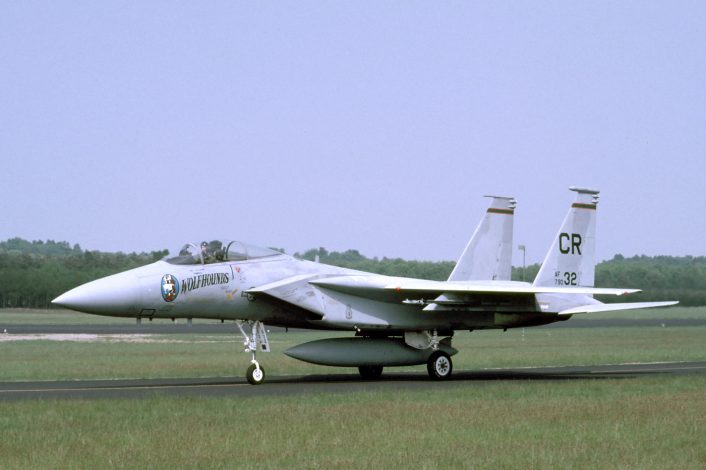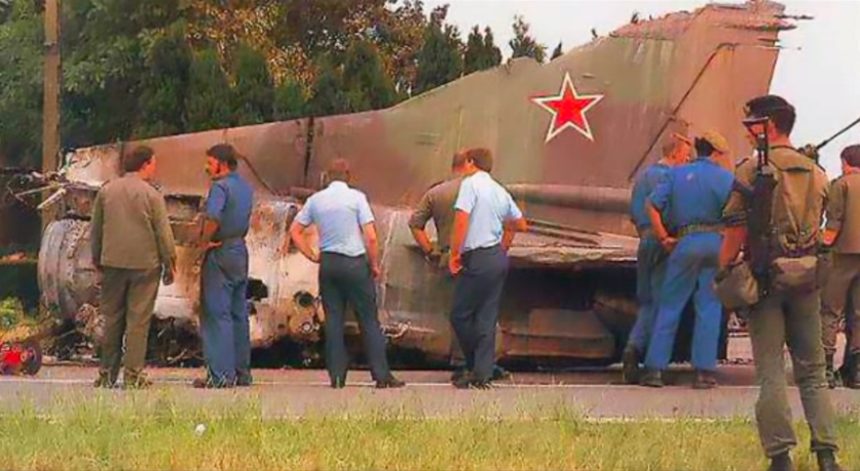That time a Soviet MiG-23 crossed Europe before crashing in Belgium.
Jul. 4 1989 was a hell of an Independence Day for the 32nd TFS (Tactical Fighter Squadron) “Wolfhounds”, a unit of the USAFE (United States Air Forces in Europe) based at Soesterberg Air Base, in the Netherlands.
In fact when Captains J.D. “JD” Martin and Bill “Turf” Murphy were scrambled with their F-15C Eagle fighter jets, they could not imagine that their mission was to intercept a very strange MiG.
On the very same day a Soviet MiG-23M “Flogger B” and its pilot, Colonel Nikolai Skurigin, had taken off for a routine training mission from Kolobzreg, in Poland. During the mission, the MiG suffered what seemed to be an engine failure that forced Skurigin to eject from his jet.
But the Flogger’s engine had some residual power and the MiG, instead of descending, began to climb towards NATO airspace.
Two QRA(I) (Quick Reaction Alert (Interceptor) F-15s at Soesterberg were scrambled to intercept the “bogey.”

In spite of the significant communication problems with their GCI (Ground Control Intercept), the two Eagle pilots were able to get close to the MiG-23 from behind. To their surprise, “JD” and “Turf” found that the Soviet combat plane was not only unarmed, but also unmanned!
Pilotless and escorted by two U.S. Air Force F-15s the Flogger climbed to 39,500 ft until it ran out of fuel and began to descend.
First, the MiG-23 appeared to be heading to Lille, on the border between France and Belgium, but later on it appeared that it would crash in an empty field and there was not need to shoot it down.
Unfortunately the aircraft hit a farm in Belgium, killing an 18-year old Belgian.
When the following day Colonel Skurigin discovered that the pilotless flight had caused the death of an innocent, he showed publicly his regret for the ejection from his jet.
The 32nd TFS “Wolfhounds”, instead played a key role in Desert Storm two years later downing an Iraqi MiG-23 and it was disbanded in January 1994.







